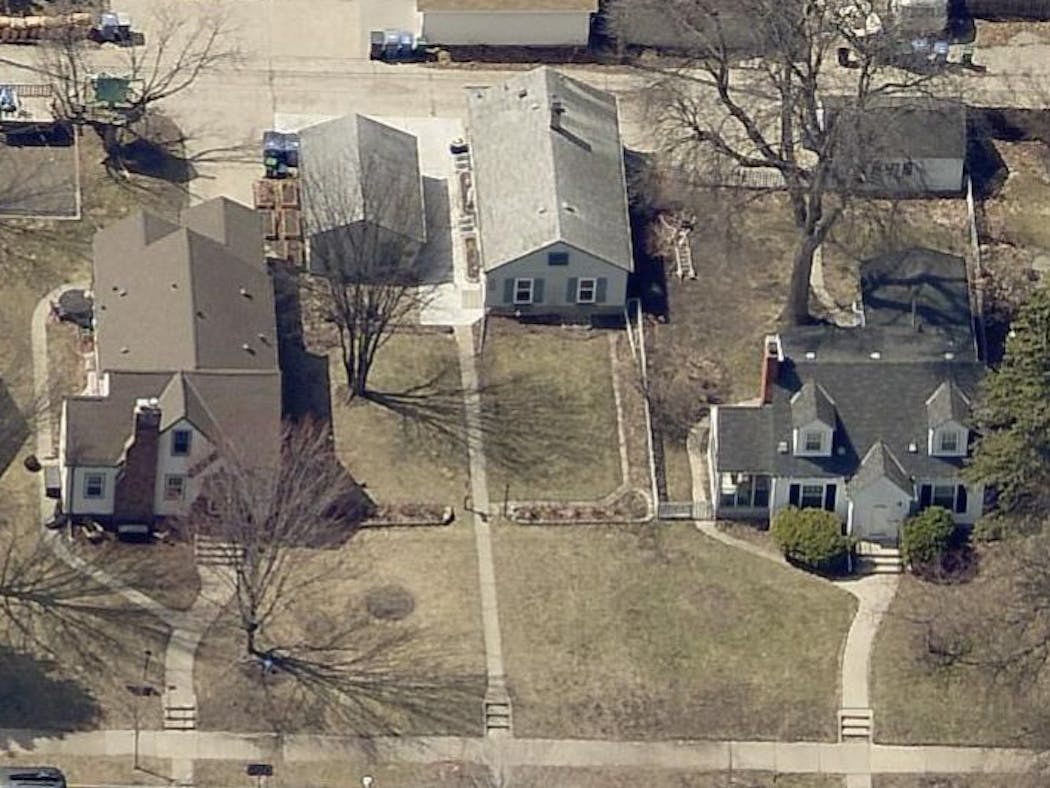What's the story behind Minneapolis' smaller houses with huge front yards?
Listen and subscribe to our podcast: Via Apple Podcasts | Spotify | Stitcher
While going on long walks during the pandemic, John Share observed an architectural phenomenon in his south Minneapolis neighborhood.
"I noticed this part of the city has a number of setback homes and I've been wondering about their history," said Share, who lives in the Longfellow area.
Share isn't the only one looking for answers about these smaller homes located far from the street, which boast expansive front lawns. He is among several readers who have sought answers about them from Curious Minnesota, the Star Tribune's reader-generated reporting project.
Share speculated that the houses may have been built to accommodate horse-drawn ice and coal deliveries from the alley. Then, as the use of cars increased, neighboring homes were built closer to the street to leave room for garages in the back.
The answer has more to do with delayed development than daily deliveries, however.
'Intended to be temporary'
When some of these Minneapolis neighborhoods developed in the early 1900s, it was common for families to build small houses before carrying out their full vision for the lot.
"Those homes were intended to be temporary with the intent that a more permanent home would be built closer to the front of the lot," said Jason Wittenberg, manager of code development for the city of Minneapolis. "Then the original home would either be demolished or perhaps in some cases turned into the garage of the home."
Such "back-of-lot" homes were typically built in the 1910s and 1920s at the same time as larger, multi-story homes in the neighborhood.
"These homes aren't necessarily a particular style, but they do tend to be fairly modest and often are [single] story," Wittenberg said.
Bailey Diers, a Special Collections librarian at Hennepin County Library, said at least 68 of these houses — listed as "temp dwellings" — were built around the city, according to historical building permit records. But the actual number is likely larger.
"There were many of these small back-of-lot houses that weren't identified in the building permits as 'temp dwellings,' so there were a lot more than the ones we could identify," she said.
Some of these temporary dwellings became permanent structures. But Diers said there is no way to know how many of them still exist today.
Many of the back-of-lot houses that are still standing are located in south Minneapolis.
"I live in the Longfellow neighborhood, and that's where you see them a lot. You also see them in the Cooper, Howe and Hiawatha neighborhoods," she said. "I found a handful in the Diamond Lake neighborhood — four of them on two different sides of the same street on the same block."
Diers added that some back-of-lot houses still exist in other parts of the city, including north and northeast Minneapolis.
Embracing the unique style
Diers studied more than two dozen of these properties and found that all of those houses have had an addition put on at one point. In many of these cases, add-ons included a basement.
"They would raise the house out and add a foundation underneath," Diers said, adding that the houses still remain modest in size. (Based on the houses studied, most have a ground floor ranging from 300 to 800 square feet.)
Minneapolis resident Jenna Davis lives in one of these homes and fully embraces not only the house's unique style, but the lifestyle that comes with it. At just over 1,300 square feet, the one-bedroom, two-bathroom rambler with a finished basement she purchased almost eight years ago in the Diamond Lake neighborhood is just the right size for her.
"I love my house. It's cute and I love that it's smaller," she said. "I have a nice big living room from when there was an addition and I have a pretty big entertaining area in the basement. I don't want anything bigger. And I love the fact that I have a big yard."
Davis has a green thumb and takes full advantage of the gardening season to plant vegetables, hostas, succulents and more. After all, flora thrives in her yard.
"That's one of the things I love about this house. I have so much south-facing light. It's great for gardening," she said.
With so much extra space, she welcomes neighbors to use the yard too. These days, her front lawn is a fixture in the neighborhood, acting as a playground of sorts for parents and their kids.
"It's a great neighborhood. There have been concerts held here," she said. "And it's not uncommon that the yard turns into a Nerf football field."
When winter rolls around, she lets her neighbors turn it into a place to skate.
"Right now I have an ice rink in my front yard," Davis said. "It's made with plywood and is the full width of my property. The kids like to come here and skate and it's just a lot of fun."
If you'd like to submit a Curious Minnesota question, fill out the form below:
Read more Curious Minnesota stories:
Why are there so many stucco homes in the Twin Cities?
Why were so many of Minneapolis' Park Avenue mansions torn down?
Is it true that Minneapolis has a park every six blocks?
Why does Minneapolis keep planting trees under power lines?
Why is there a new cellular pole in my Minneapolis neighborhood?
Was organized crime behind the demise of the Twin Cities streetcar system?




